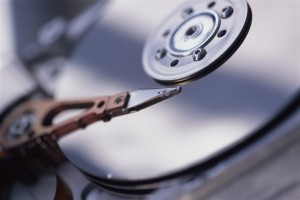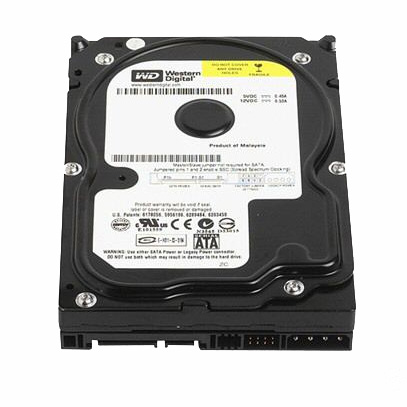 What, might you ask, is drive scrubbing… In these days of identity theft we are all constantly reminded of the need to ensure that our personal data is kept secure, out of the hands of criminals and when it comes to disposal of just about anything, that we render our data unusable.
What, might you ask, is drive scrubbing… In these days of identity theft we are all constantly reminded of the need to ensure that our personal data is kept secure, out of the hands of criminals and when it comes to disposal of just about anything, that we render our data unusable.
Many people shred their documents before recycling them, utility bills, letters and bank statements all provide very useful information to the criminal and offer a means for them to hijack your identity. Imagine then the one place just about everything about you lives… yes, your computer’s hard drive is nothing short of a treasure trove of personal data… far more than any bag of recycling is ever likely to contain.
We all move on, get a new computer and eventually it gets chucked in a skip at the council tip or dusted of and handed on to a friend or relative, maybe even a charity. But make no mistake, eventually your old computer and crucially your old hard drive will end up in that skip and like it or not it will probably be put on a boat and taken far away… far away to where old computers are ‘dismantled’ for their component metals but whilst 90% of your PC is literally simmering over an open fire, your hard drive is still working… only this time someone is looking for any files with personal data.
But I deleted the files… but I was really good and I formatted the drive… Well, let’s look at what deleting a file really is. Deleting a file simple involved removing the index listing for that file, much the same as erasing a chapter from the contents page of a book… the chapter is still there in it’s entirety, it’s just not listed in the contents. Your computer looks at the contents list, doesn’t find an entry and reports ‘file does not exist’. But with good reason, there are pieces of software which look at the disk not the index… like hunting through every page of the book… you will find the erased chapter because its still there, but it’ll take a short while.
Formatting, better certainly but that just sticks zeros over everything. Trouble is hard drives aren’t perfect, each time they write data the head can be slightly off to one side of where it was last time. Imagine a dinner plate being spun… you have a paint brush. You touch it to the plate for one revolution leaving a thin line of paint on it. Now you take another brush with a different colour and you try to place this next line directly on top of the last. You might be good but inevitably not perfect and some of the first line will be visible either side of the second line. Same with a hard drive.

After a format, all a criminal has to do is use a piece of software which makes the hardrive position the heads off to one side and instead of reading the string of zeros, it reads your old data. And if it reads lots of zeros, it just knows to ignore them making it very easy to determine what’s old data and what’s not.
So, what’s the solution? Simple, write junk patterns (ones and zeros) to the drive again and again and again, in fact 7 times – that’s what the US DoD standards require for their secret files. This of course takes time and dedicated software but once complete, the drive is blank, ready to be used again or safely scrapped, only this time it doesn’t matter who gets hold of it because not even forensic data recovery services will be able to get your data back off the disk.
What’s wrong with a hammer I hear you cry… of course this is the solution always thrown out at the end of any discussion over data scrubbing. Whilst there may be plenty to be said for venting your pent up frustration on that old hard drive at the bottom of the garden with the sledge hammer… it’s not actually all that clever an idea. Firstly, it will very quickly render the drive inoperable which leaves that computer you were passing on short of a key component. Next consider that the manufacture designed it to be fairly robust and this was achieved by building the fragile bits into a solid metal casting which won’t let you at the platters without a fight. Then you have the mess of the shattered platters, sharp, less biodegradable than a block of concrete and combined with the mangled remains of the casing, completely un-recyclable and finally, you still haven’t actually destroyed the data, it’s still there, you’ve just made reading it more of a challenge.
It’s far better to wipe the data and then recycle the drive as a whole, that way it’ll either be recycled or if it does end up being shipped to a dump on the other side of the planet, at least it won’t give up any of your secrets!
Don’t take the chance, protect your identity and have those old drives scrubbed before you let them out of your sight.
The options:
£19.99 – Drive scrubbing to the US DoD 5220.22 standard with the drive returned to you blank and ready for use or disposed of on your behalf at your option.
£29.99 – Drive scrubbing to the US DoD 5220.22 standard and your operating system reinstalled so your old PC is ready to be passed on fully functional.
All drive scrubbing operations are certified with a certificate baring the drive serial number and details, date of scrubbing completion.
If you are unsure what your hard drive looks like or how to extract it don’t worry, Dezine-Host can do the extraction for you. Please note that for the OS reinstall option, the whole computer case is required because the installation must be tailored to the system otherwise it simply won’t work.
Terms and conditions for the media scrubbing service: Scrubbing Ts & Cs
